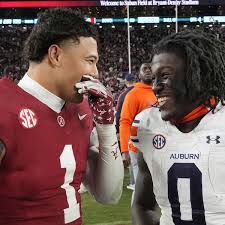
Breaking: Auburn Tigers Lose Veteran CB To Transfer Portal
Analysis:
Auburn University’s football program has experienced notable changes in its cornerback roster due to recent transfer portal activities. Veteran cornerback Antonio Kite, who transferred from Alabama to Auburn in January 2024, has now entered the transfer portal again, seeking opportunities elsewhere.
Kite’s initial transfer to Auburn was part of a broader trend of player movements following significant coaching changes, including the retirement of Alabama’s Nick Saban. During his tenure with the Tigers, Kite contributed to the secondary, but his departure opens up a spot that the coaching staff will need to address. In response to such departures and to bolster their defensive lineup, Auburn has been proactive in the transfer market. The Tigers recently secured commitments from two defensive backs: Raion Strader from Miami (OH) and K.J. Seymore from Georgia Tech. Strader, a 6-foot, 182-pound sophomore, is recognized as a four-star transfer and the No. 5 cornerback available, bringing with him significant experience, including three interceptions and 32 pass deflections over two seasons. Seymore, a 5-foot-11, 205-pound sophomore, started seven games for the Yellow Jackets in 2024, recording 51 tackles and three tackles for loss. These additions are part of Auburn’s broader strategy to strengthen its roster through the transfer portal. The Tigers have already secured 13 transfer signees, earning a No. 4 ranking in the 247Sports transfer rankings. Despite these acquisitions, the coaching staff continues to seek additional talent to fill specific positional needs, ensuring depth and competitiveness for the upcoming season. The dynamic nature of the transfer portal has become a significant aspect of college football, with programs like Auburn actively managing both incoming and outgoing players to maintain a competitive edge. The departure of a veteran like Kite, combined with the infusion of new talent, underscores the importance of strategic recruitment and player development in adapting to the evolving landscape of college athletics.
Leave a Reply